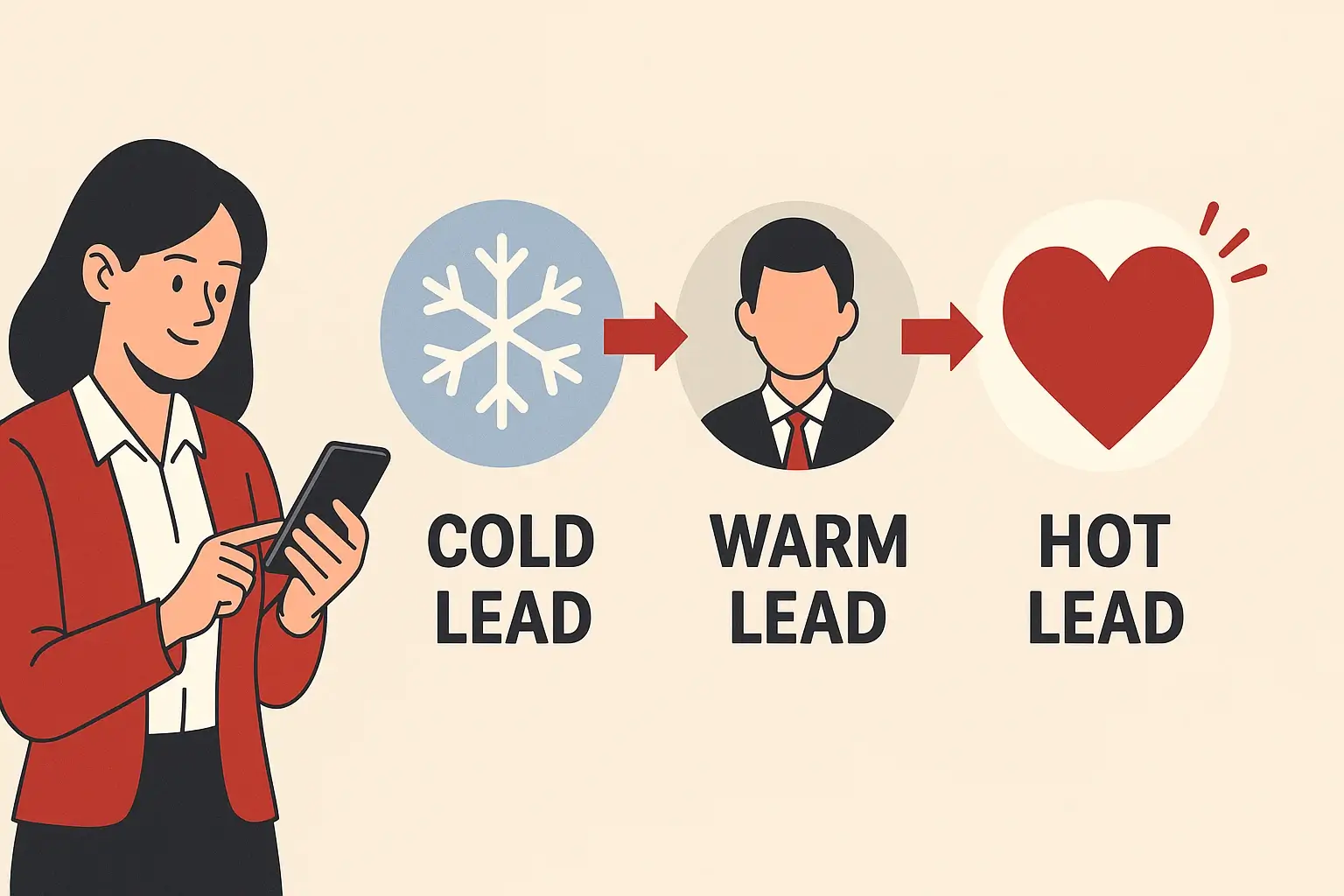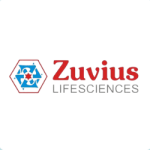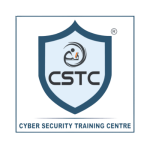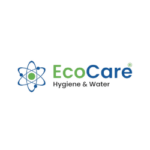Cold Lead Generation: Complete 2025 Strategy for Marketing

Cold lead generation through marketing is all about attracting and engaging people who’ve never interacted with your brand before, turning strangers into prospects. In 2025, especially in India’s fast-growing digital economy, it’s an essential strategy for businesses that want to grow their pipeline without relying solely on cold calls.
Why Read This Guide?
If you’re struggling to fill your funnel with quality leads or feel like your cold outreach falls flat, this guide is for you. You’ll learn:
- Digital marketing tactics that work for cold lead generation
- How to warm up leads without ever picking up the phone
- Tools, channels, and content ideas tailored for Indian businesses
Let’s dive in.
What Is Cold Lead Generation?
Cold lead generation through marketing means reaching out to people who haven’t heard of your brand, yet. These individuals may not be actively looking for your product or service, but they match your ideal customer profile.
Common examples:
- Running LinkedIn ads targeting CXOs in Indian tech firms
- Publishing SEO blogs that answer pain-point-driven questions
- Offering free tools, guides, or calculators behind a sign-up wall
- Promoting valuable content through social or paid media
The goal? Deliver value before you ask for anything in return.
Why Marketing Works for Cold Leads in India
Indian buyers are cautious and research-driven. They compare brands, read reviews, and ask for referrals before they commit.
Marketing wins because:
- It allows buyers to explore at their own pace
- It builds trust passively through valuable content
- It enables retargeting, nurturing, and remarketing at a low cost
“Cold leads are just future customers who haven’t discovered your value yet.”
Indian Performance Benchmarks for Cold Lead Marketing
| Metric | Indian Industry Avg |
|---|---|
| Landing page conversion rate | 3% – 10% |
| Cold email open rate | 18% – 25% |
| LinkedIn ad CTR | 0.8% – 1.5% |
| Lead-to-opportunity rate | 5% – 12% |
Who Owns This? Marketing + Sales Alignment
Great cold lead generation comes from strong alignment:
- Marketing attracts cold leads with content, ads, SEO, and offers
- SDRs or sales step in to qualify and move them through the funnel
The better your marketing, the less “cold” your cold leads will feel when contacted.
Phase 1: Identifying & Sourcing Cold Leads
1. Know Your Ideal Customer (ICP)
Start by clearly defining your Ideal Customer Profile (ICP). This will ensure that you focus your efforts where they matter most.
- What to Include: Think about details like age, job title, industry, company size, and challenges they face.
- A Helpful Tip: Mitchell’s Posts to Profits recommends the Gravity Method, which asks, “Who can you help the most with your skills and knowledge?”
Try This: Look at what your competitors are doing. Which topics are they discussing, which free resources are they sharing, and which problems are they solving?
Why This Works: People are naturally drawn to content and messages that feel relevant to their specific needs.
2. Find the Right Places to Look
Identify where your ideal customers spend their time. This helps you reach them in their preferred spaces.
- Social Media: Use platforms like LinkedIn for business leads and Instagram or Facebook for broader audiences.
- Industry Events and Webinars: Participate in trade shows, conferences, and online webinars to connect with potential leads.
Pro Tip: Joining or hosting virtual events is an effective way to showcase your expertise and establish credibility.
Why This Works: People are more likely to engage with a brand that they see as experienced and trustworthy.
3. Use Lead Generation Tools
Use modern tools to make finding and organizing cold leads easier.
- LinkedIn Sales Navigator: Helps you find targeted business leads.
- Industry Databases: Explore databases from trade groups or market research firms.
- Lead Generation Software: Use platforms like ZoomInfo or Hunter.io to gather information and create contact lists.
Important Tips: Make sure your outreach follows data privacy rules like GDPR or CAN-SPAM regulations.
Why This Works: Our brains respond better when we can quickly access useful tools that make processes simpler and more efficient.
Phase 2: 8 Proven Marketing Tactics for Cold Lead Attraction
1. Create Problem-Solving Content
Write blogs, carousels, videos, or podcasts that solve real problems your audience faces.
Topics that perform well in India:
- “How Indian D2C brands are scaling with marketing automation”
- “Checklist: Is your business ready for GST e-invoicing?”
2. Use LinkedIn for Targeted Reach
- Run lead gen ads to specific job titles or industries
- Post weekly with insights, trends, and client stories
- Use lead magnets like “Free Audit Template” or “Playbooks”
3. Capture Leads with Lead Magnets
Offer real value:
- Templates
- Case studies
- Webinars with industry guests
- Budget planners or calculators
Make the CTA clear: “Download the 2025 Marketing ROI Tracker”
4. SEO for Organic Cold Lead Capture
Optimize for non-branded long-tail keywords like:
- “Affordable CRM tools for Indian startups”
- “Best B2B sales tips for SaaS founders”
This content attracts people unaware of your brand but are ready to learn.
5. Retarget Visitors with Smart Ads
If cold leads visited your landing page, show them a new offer.
- Facebook retargeting: “Missed the checklist? Grab it now.”
- Google Display: Show testimonials or a free trial CTA.
6. Email + WhatsApp Sequences
After lead capture, nurture with:
- Success stories
- Product how-tos
- Free demos or comparison charts
- Localized industry tips
Bonus: Use tools like WhatsApp Business API or Mailmodo.
7. Build Trust with Social Proof
Cold leads generation is all about trust proof, not pitches.
- Share results from your Indian clients
- Highlight industry awards or testimonials
- Add trust badges (ISO, DPIIT registered, Startup India, etc.)
8. Collaborate With Influencers & Niche Communities
- Partner with creators on YouTube, Instagram, or LinkedIn
- Co-host webinars with complementary service providers
- Engage on Slack or WhatsApp B2B groups (e.g., SaaSBOOMi, GrowthX)
Phase 3: Direct Outreach & Conversion
Reach Out the Right Way
Reaching out to people who haven’t interacted with your brand before requires a thoughtful approach that adds value and respects their time.
- Cold Emails: Create customized emails that address specific needs and offer solutions.
- Cold Calls: Use friendly, helpful scripts to build rapport with potential leads.
- Social Media Engagement: Initiate connections by messaging prospects and interacting with their posts.
- Paid Ads: Utilize Google Ads and LinkedIn Ads to target specific groups and reach potential leads.
Did You Know? Personalized outreach can boost response rates by up to 40% (Source: McKinsey Digital Sales Study, 2023).
Why This Works: Communication that is tailored and focused on providing value elicits a positive response and higher engagement.
Make It Personal
Generic outreach rarely succeeds. Personalize your approach to show that you understand who they are.
- Use Their Name: Refer to their role or company to make the message feel direct.
- Highlight Challenges: Address a potential problem they might be facing to build trust.
Why This Works: People are more inclined to pay attention to content that feels relevant to their situation.
Build Relationships First
Cold outreach should be more than just a push to make a sale; it should be the start of a conversation.
- Act as a Guide: Position yourself as a helpful resource, not just someone trying to sell.
- Stay Engaged: Send follow-up emails and relevant content to maintain open communication. Research shows that about 80% of sales require at least five follow-ups (Source: WebFX Lead Conversion Report). five follow-ups.
Why This Works: Frequent, meaningful interactions build trust and create a strong foundation for future engagements.
Pro Strategies for Cold Calling
Call the Right People
Make sure your calls align with your ICP to increase your chances of success.
- Gravity Method: Use your experience and strengths to pinpoint who you can help best.
Why This Works: Reaching out to the right people leads to more effective and engaging conversations.
Make Your Message Strong
Avoid hard-sell tactics. Instead, prioritize being informative and delivering value.
- Show Immediate Benefits: Demonstrate how your solution can provide immediate benefits.
- Discuss Their Challenges: Speak to them about the problems they face and how you can solve them.
Why This Works: Problem-solving approaches resonate well with leads, encouraging them to engage.
Follow the PASTA Framework
Apply Mitchell’s PASTA framework to structure your call:
- Problem: Address the main issue they’re facing.
- Amplify: Emphasize the potential consequences of not solving it.
- Story/Solution: Share a story that shows how you handled a similar problem.
- Testimonial: Include positive feedback from clients.
- Action: End with a goal-oriented next step, such as scheduling a follow-up.
Why This Works: Sharing relatable stories and testimonials fosters trust and showcases your credibility.
Have Real Conversations
Be genuine in your discussions:
- Ask Questions: Understand their needs better.
- Listen Actively: Reflect on their responses to show you’re paying attention.
- Find Where You Fit: Identify how your product or service can fill their needs.
Example: “What solutions have you tried so far? What’s still holding you back?”
Why This Works: Authentic conversations help build a strong connection and make leads more willing to trust you.
2025 Cold Lead Marketing Plan
Alignment: From Cold to Qualified Opportunity
Goal: turn total strangers into sales-ready conversations, without being spammy.
1) Map the field (group before you move)
Group your leads by industry, job title/seniority, geo, and trigger events (e.g., hiring, funding, product launch).
For example: group “D2C beauty founders in Mumbai” vs. “SaaS PMMs in Bengaluru.”
Why this works: organized segments yield clearer, more relevant messages; consequently, reply rates climb and objections drop.
Do this:
- Build segments in your CRM (HubSpot/Zoho/LeadSquared).
- Add 3 pains + 3 desired outcomes to each segment profile.
- Tag buying committee roles: user, influencer, decision-maker.
2) Orchestrate channels (not one, but a chorus)
Use multiple channels to meet people where they actually pay attention:
- Email → problem–insight–next step (short, skimmable).
- LinkedIn → connect + comment thoughtfully; then DM with context.
- Phone → short, respectful calls to confirm fit or timing.
- Direct mail (selective) → a handwritten note or 1-pager stands out.
Why this works: repeated, cross-channel touchpoints reinforce your message; as a result, recall and response improve.
Cold calling tips (keep it human):
- Open with context: “Saw your team hiring 3 SDRs, scaling outbound?”
- Ask a binary question to earn permission: “Worth 60 seconds?”
- Lead with their problem → one line of social proof → next step.
- If no fit, exit graciously and ask timing: “Circle back post-Q4?”
3) Lead with value (content that pulls, not pushes)
Support outreach with content that solves real problems:
- Lead magnets: quick templates, checklists, calculators.
- Blog posts & case snippets: short wins tied to their segment’s pains.
- Landing page hub: your best “cold → warm” resources in one place.
Tip: link to your cold-outreach guide or a 3-step playbook; additionally, add UTM tags for tracking.
Why this works: useful content builds trust; therefore, more cold prospects stay in your orbit long enough to convert.
4) Make it a program (cadence, follow-ups, learning)
Bake cold outreach into your plan with a fixed cadence:
- 12-day, 6-touch baseline (e.g., Email → LI comment → Call → Email → LI DM → Call).
- Follow up with value (fresh angle, short video, mini case, not “just bumping”).
- Track & adapt weekly, subject lines, hooks, send times, and call openings.
Why this works: consistency plus iteration compounds; accordingly, you stay top-of-mind without burning bridges.
5) From cold to warm (know when the needle moves)
When someone opens repeatedly, clicks, downloads, replies, or books time, treat them as warm.
Then:
- Score their intent in your CRM (fit score + behavior score).
- Nurture smartly: send targeted content tied to their segment’s pains.
- Invite them to a micro-commitment: webinar seat, tool trial, 15-minute audit.
6) From warm to qualified opportunity (clear handoff)
Define Qualification (BANT-lite):
- Problem present? (stated pain aligned to your solution)
- Priority soon? (this quarter or next)
- People involved? (you’re talking to someone with pull)
Handoff flow:
- SDR/marketer updates notes + recent assets consumed
- Book discovery with AE; share segment playbook + proof points
- AE opens with the use case they engaged with; then maps the scope and next steps
Why this works: a crisp definition avoids time sinks; similarly, a tight handoff preserves momentum.
7) Stay compliant & ethical (always)
- Email: include unsubscribe; use opt-in language on forms.
- Data: follow India’s IT Act; if you market globally, align with GDPR.
- Truth in offers: no bait-and-switch; be explicit about what they’ll get.
Quick checklist (copy/paste)
- Segments created with pains/outcomes + roles
- 6-touch, 12-day cadence live across email/LI/calls
- Content hub linked (lead magnet, case snippets, blog)
- CRM scoring rules: fit + behavior
- Qualification criteria documented (Problem/Priority/People)
- Handoff template to AE (context + assets consumed)
- Compliance: unsubscribe + consent language set
Bottom line: the right message, delivered across the right channels to the right segment, then scored, nurtured, and qualified; turns a cold lead into a qualified opportunity.
Recommended Reading:
FAQs
What is a cold lead in marketing?
Someone who hasn’t interacted with your brand but matches your buyer profile.
Is cold lead generation legal in India?
Yes, as long as it follows privacy, consent, and data regulations like the IT Act and GDPR (if applicable).
Which channel is best for cold lead marketing?
For B2B: SEO and LinkedIn. For B2C: Instagram and WhatsApp are highly effective.
How long does it take to convert a cold lead?
Usually between 7 to 21 days, depending on your funnel, content quality, and follow-up strategy.
What is cold lead generation?
Cold lead generation is the process of attracting and engaging individuals who are unaware of your brand but fit your ideal customer profile.
How to identify and market to cold leads?
Identify cold leads using demographic and behavioral data. Market to them using valuable content, lead magnets, and nurturing campaigns across email, ads, or social platforms.
What are the differences between cold, warm, and hot leads?
Cold leads haven’t interacted with your brand, warm leads have shown interest, and hot leads are ready to buy. Each requires a different level of engagement and follow-up.
How to convert cold leads?
Use educational content, personalized follow-ups, case studies, and value-driven CTAs to build trust and move cold leads closer to a sale.
How to nurture cold leads?
Send a series of emails or messages that offer value: share tips, guides, social proof, and invite engagement through webinars or free trials.
How to re-engage cold leads?
Use a reactivation campaign with updated offers, surveys, or direct questions like “Still looking for a solution to X?” to regain attention.
















